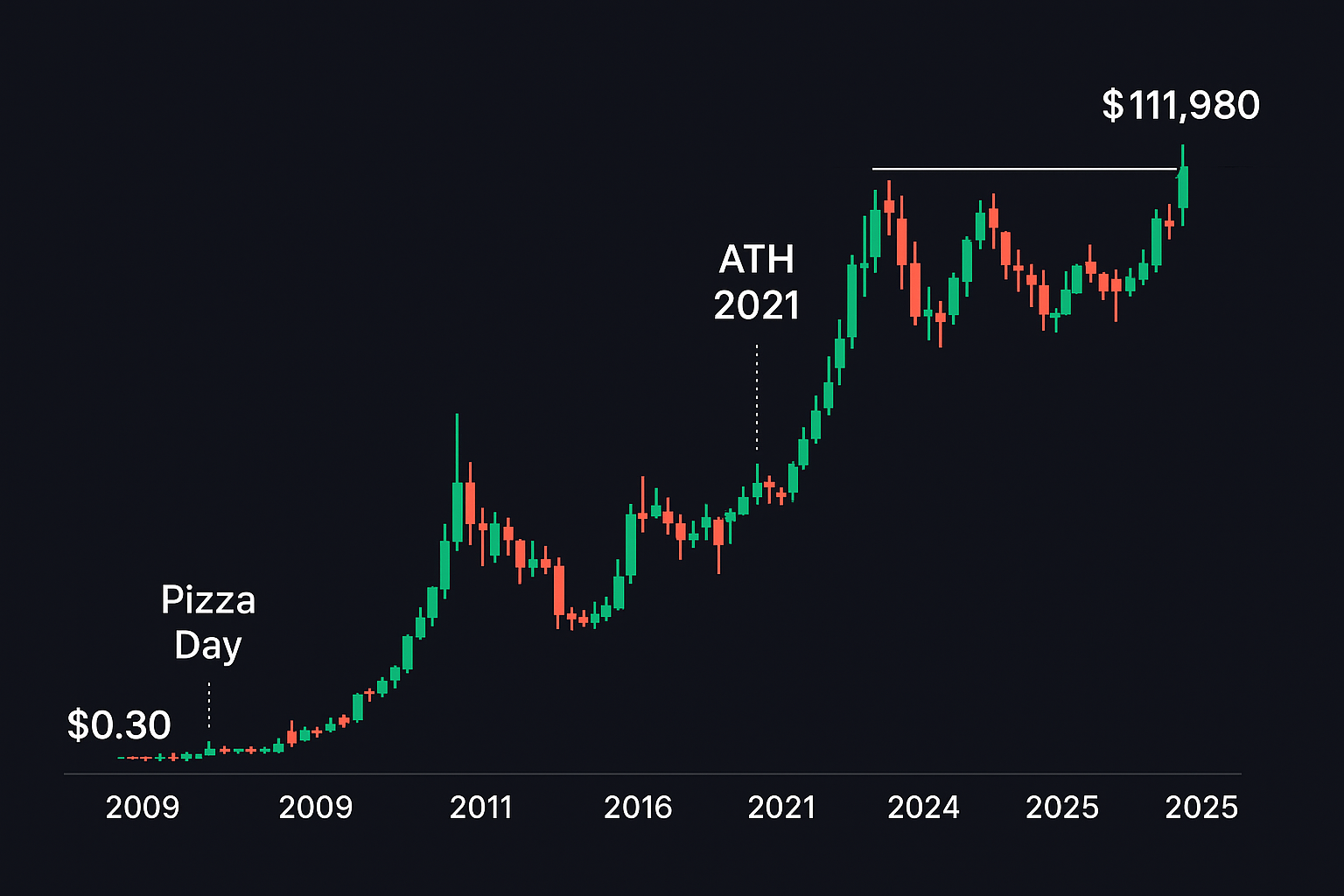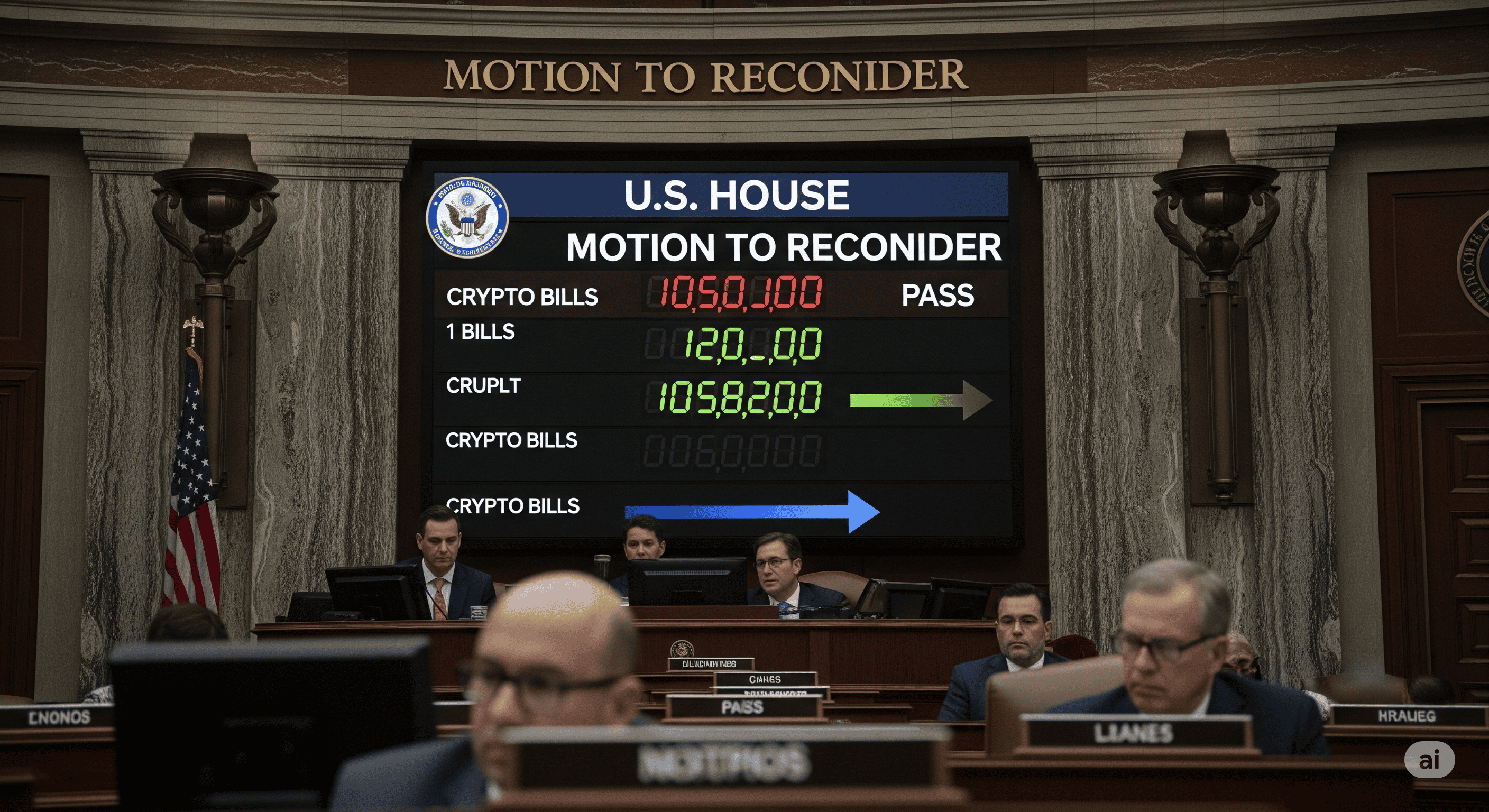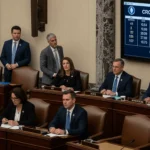Initial Confusion & Today’s Clarity for Crypto Policy
Just yesterday, headlines painted a picture of significant legislative gridlock for digital assets in the U.S. House of Representatives. News, including our recent article, “US Lawmakers Divided on Crypto Regulation: 223 Votes Against Advancing Key Crypto Bills“, highlighted a crucial vote that seemed to block the progression of the “Crypto Genius Act,” “Clarity Act,” and “Anti-CBDC Act.” Many were left wondering if these vital crypto bills were dead in the water.
However, in a rapid turn of events, the narrative has dramatically shifted. Less than 24 hours later, these very same bills have now advanced. What triggered this quick change of fortune for cryptocurrency legislation? The answer lies in a crucial, and often misunderstood, aspect of US Congress procedure: the “Motion to Reconsider.”
Unpacking Yesterday’s Crypto Vote: A Brief Recap
To fully grasp the significance of today’s development, it’s helpful to briefly recall yesterday’s initial US House crypto vote. On July 15, the House cast votes on whether to advance three key pieces of legislation:
- The Crypto Genius Act (aimed at fostering innovation)
- The Clarity Act (seeking regulatory clarity for digital assets)
- The Anti-CBDC Act (opposing a potential Central Bank Digital Currency)
The initial vote saw a substantial bipartisan opposition, with 223 lawmakers voting “NAY” against their advancement. This outcome was widely interpreted as a major setback for blockchain policy and the digital asset industry’s quest for clear regulatory frameworks.
The Crucial Procedural Turn: Understanding the “Motion to Reconsider”
Today, the legislative process took a pivotal detour on the House floor with the introduction of a “Motion to Reconsider.” This parliamentary maneuver is less about the bill itself and more about the decision-making process.
What is a Motion to Reconsider?
In simple terms, a “Motion to Reconsider” is a formal request for a legislative body to revisit a decision it has just made. It’s a fundamental part of parliamentary rules designed to allow for a second look at a vote, whether due to new information, a change in circumstances, or simply to provide another opportunity for a different outcome.
- Who can introduce it? Typically, a member who voted on the winning side of the original vote makes this motion. This might seem counterintuitive, but it’s a strategic move to control the process. A member from the losing side could also make it if they had strategically voted with the prevailing side.
- What does it achieve? If the “Motion to Reconsider” itself passes, it effectively nullifies or “undoes” the previous vote. This doesn’t mean the original bill automatically passes; rather, it clears the way for the original question (in this case, advancing the crypto bills) to be brought up for a new vote.
How the Reconsideration Vote Played Out
Today, the House held a vote specifically on the motion to reconsider yesterday’s decision. The results were telling:
- YEA Votes: 215
- NAY Votes: 211
With more “YEA” votes, the Motion to reconsider successfully passed. This critical outcome meant that the initial vote from July 15th, which had blocked the bills, was now set aside.
Crypto Bills Advance: The Second Vote That Made the Difference
With the successful passage of the “Motion to Reconsider,” the legislative slate was effectively wiped clean for these US crypto bills. This allowed the House to hold a second, subsequent vote on the actual Crypto Genius Act, Clarity Act, and Anti-CBDC Act.
While the precise vote count for this second, decisive vote hasn’t been widely detailed, the confirmed news is that this vote passed, allowing the cryptocurrency legislation to advance out of the House. This outcome underscores the determined efforts of bill proponents to navigate the legislative hurdles.
Why This Advancement Matters for Crypto Legislation
The successful passage of these bills out of the House, after what initially seemed like a dead end, is a significant moment for the digital asset space:
Implications for Digital Asset Clarity
The Clarity Act is particularly important for the industry. Its advancement signals a potential step towards establishing clearer definitions for digital assets, which could reduce regulatory uncertainty and foster innovation within the U.S. market. Businesses and developers have long called for such clarity to confidently build and operate.
The CBDC Debate Heats Up
The Anti-CBDC Act moving forward means the debate surrounding a potential U.S. Central Bank Digital Currency will intensify. This bill reflects significant concerns among lawmakers regarding issues like privacy, government control over financial transactions, and the potential impact on existing financial systems. Its advancement ensures this critical discussion continues at higher levels of government.
Momentum for Future Crypto Policy
House passage provides substantial momentum for these crypto bills. While not yet law, it demonstrates that these issues are gaining traction and can successfully navigate at least one chamber of Congress. This could encourage the Senate to prioritize similar or identical legislation.
What’s Next for the US Crypto Bill
Passing the House is a major achievement, but it’s important to remember that it’s just one step in the U.S. legislative journey. The road ahead for these US crypto bills typically involves:
- Conference Committee (If Necessary): If the House and Senate pass different versions of the same bills, a conference committee composed of members from both chambers will work to reconcile the differences into a single, unified bill.
- Senate Consideration: The bills will now move to the Senate, where they will need to be introduced, undergo committee review, and be voted upon. The Senate may pass its versions or take up the House-passed bills.
- Presidential Assent: Finally, the reconciled bill (if one emerges) must be sent to the President. The President can sign it into law, veto it (which Congress can override with a two-thirds majority in both chambers), or allow it to become law without a signature.
The legislative process is often a marathon, not a sprint, filled with strategic maneuvers like the “Motion to Reconsider.” The digital asset world will be watching closely as these pivotal cryptocurrency legislation efforts continue their journey through Congress.














































